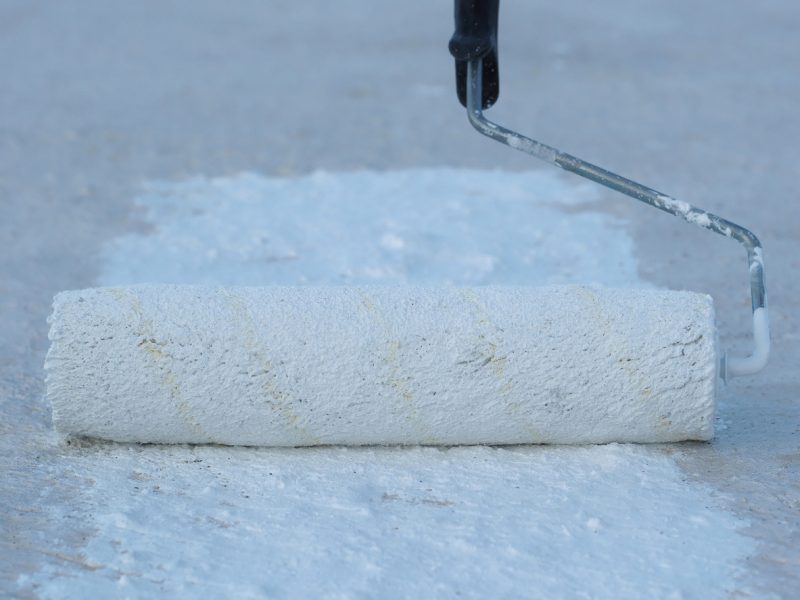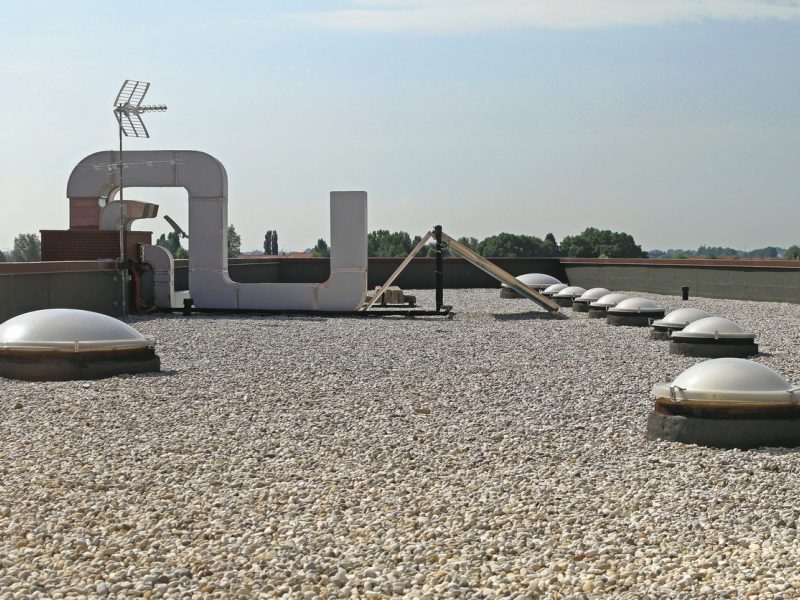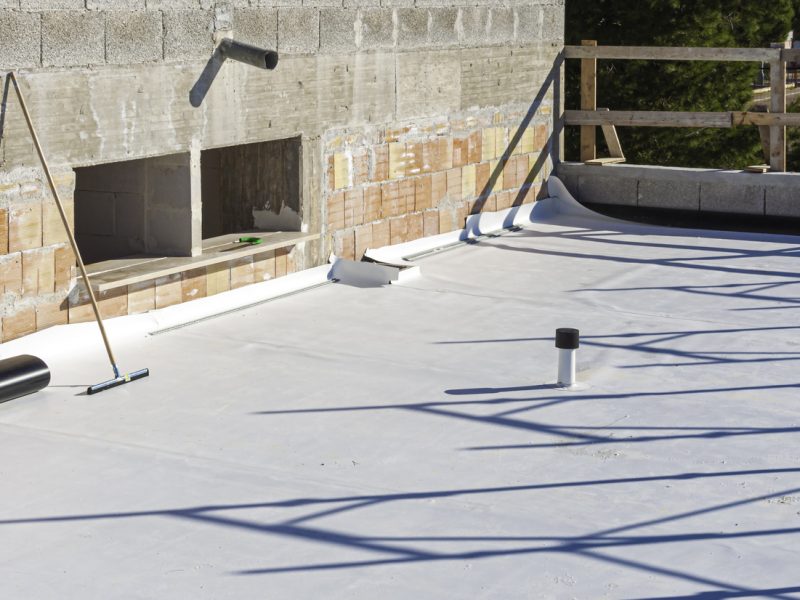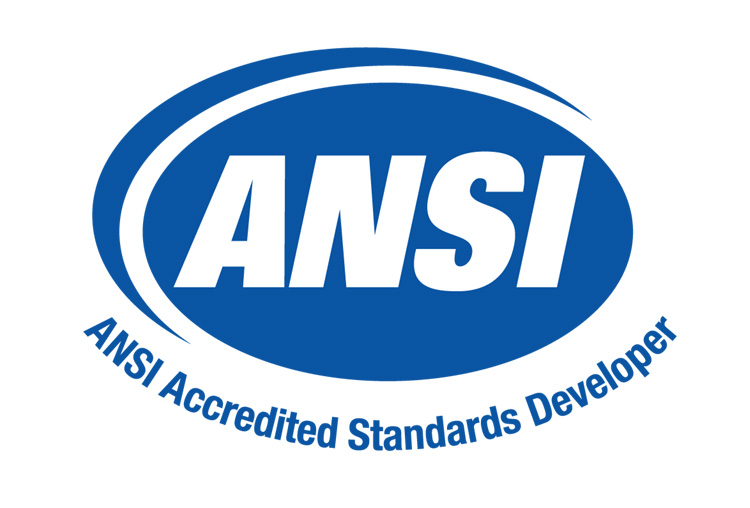Low-Sloped Roofing Product Types
Low-sloped roofs have a roof surface with a slope (rise to run) ratio of less than 2:12 (9.5 degrees from the horizontal) and are often found on commercial buildings or multi-family homes. The products described below are primarily used for low-sloped roofs, although in some cases they may also be used for steep-sloped roofs.

Asphaltic Membrane
Asphaltic membranes are made up of asphalt and one or multiple reinforcement layers. Asphaltic membranes can be smooth, surfaced, or surfaced with granules or aggregate. The surfacing material determines the radiative properties of the finished roof. There are two varieties of asphaltic membrane roofing: modified bitumen (mod bit for short) and built-up roofing (BUR).
Modified Bitumen
Modified bitumen roofing contains reinforcing modifiers that give the bitumen plastic qualities, allowing it to form a roll. Atactic Polypropylene (APP) and Styrene Butadiene Styrene (SBS) are the most common modifiers. Sheets of modified bitumen are applied to the roof by torch, mechanical adhesion, or with an adhesive.
Built-up Roofing
Built-up Roofing is composed of asphalt-coated roofing felt that is applied to the roof in built-up layers. A BUR is usually topped with a gravel covering or a cap sheet, which helps protect the roof from water. There are several highly-reflective BUR cap sheets and other surfacing products on the market.

Liquid-Applied Roof Coating
Field-applied roof coatings are polymer-based liquid coatings that are applied directly to a roofing substrate in the field. The coating might be sprayed, rolled, or painted onto the roof surface and may be applied on a new roof assembly or an existing roof surface.
There are two types of field-applied coatings: elastomeric (such as silicone, acrylic, or polyurethane) and non-elastomeric. Elastomeric coatings have an added polymer that makes the coating more flexible. Non-elastomeric coatings are harder and more brittle. This category also includes cementitious coatings, where cement is mixed into the coating to enhance solar reflectance. Some manufacturers also offer aluminized coatings, which are asphalt coatings with an aluminum pigment.
Fluid-Applied Membrane
A fluid-applied membrane is a liquid coating that is applied to the roofing substrate in the field to form a roof covering. Fluid-applied membranes differ from roof coatings in that they may contain a reinforcing fabric in addition to multiple layers of liquid-applied materials. This systematic approach reinforces the coating for increased tensile strength and flexibility. This type of product can be applied on top of an existing roof as an additional roof cover.

Rock (Roofing Aggregate)
Rock is typically used as roofing aggregate, which is created by adhering a layer of mineral granules to a base adhesive layer (usually tar). The base layer adheres the rocks to the roof. Aggregate products protect the roofing surface from UV light and physical harm, and help insulate the building from thermal changes by providing thermal mass, which absorbs solar energy.

Single-Ply Membrane
A single-ply roofing membrane is a flexible sheet of synthetic polymer that is applied to the roof in a single layer. The single-ply membrane can be loosely laid, adhered mechanically, or adhered with caulk or heat. There are two main types of single-ply roofing materials: thermoset and thermoplastic.
Thermoset Membranes
Thermoset membranes cannot be applied with heat because it will change their physical characteristics. Adhesives and tape are used to seal seams. An example of thermoset roofing is ethylene-propylene-diene-terpolymer membrane, commonly known as EPDM. EPDM is a flexible elastomeric roofing material that is available in fleece-backed and reinforced varieties.
Thermoplastic Membranes
Thermoplastic membranes will return to their normal configuration when heat is applied, so the seams can be melded together using hot-air welding. One example is thermoplastic polyolefin (TPO), which is a blend of polymers that can contain flame-retardants or UV absorbers. Another example is polyvinyl chloride (PVC), a synthetic polymer derived from vinyl chloride that is naturally fire-retardant. Thermoplastic membranes are typically available in fleece-backed and reinforced varieties.
You can search for roofing products by type on the CRRC Roof Rated Products Directory.

